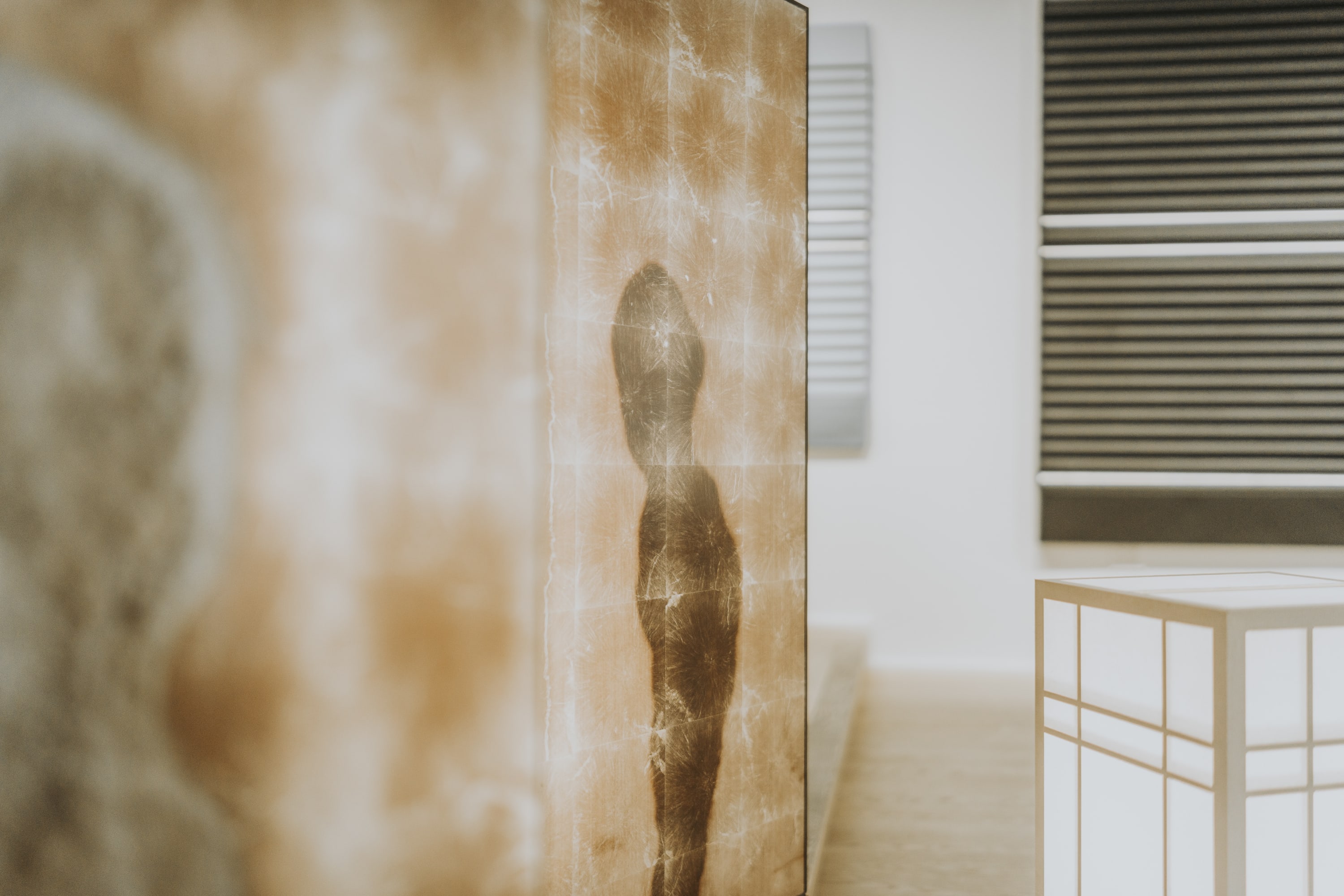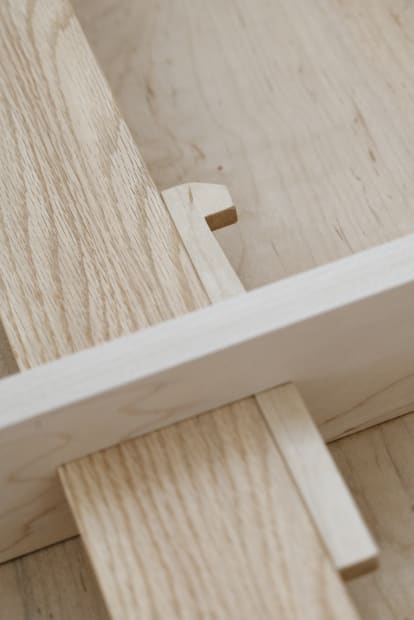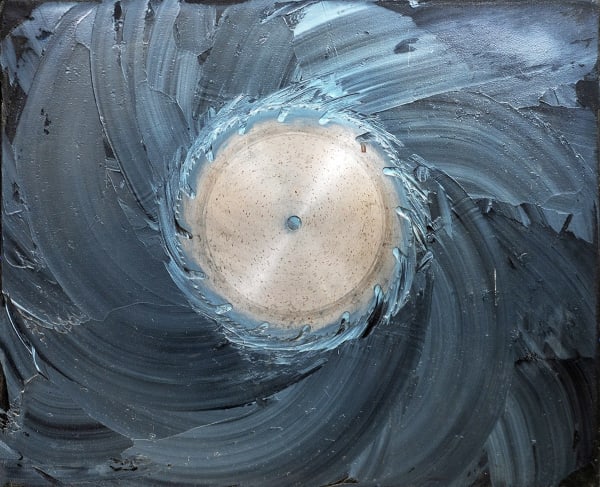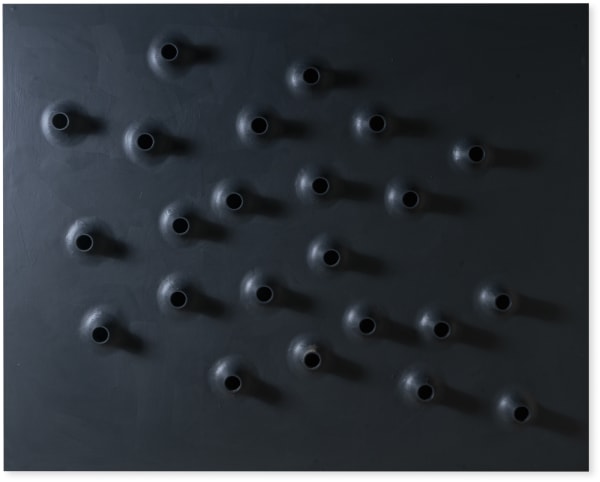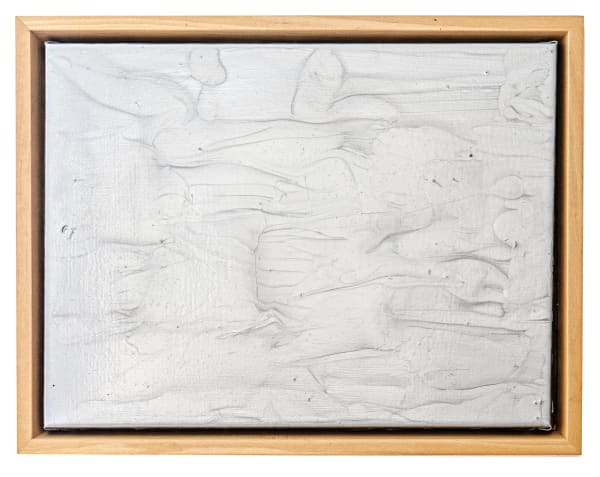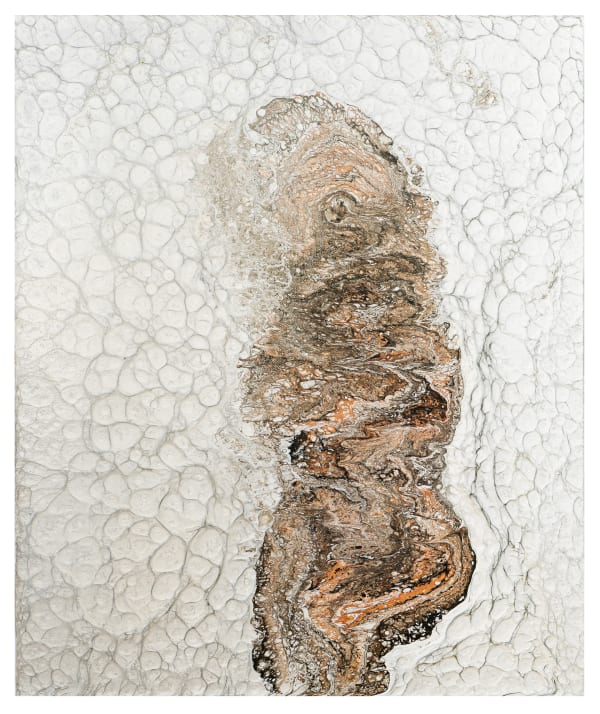Most of the tube paintings Hanafusa created in the 1960s and 1970s are made by weaving the canvas through a number of assembled tubes so that the canvas alternates between the state of being revealed and being hidden. Carter Ratcliff, in a catalogue article, observed the difference between seeing a tube painting at a distance and approaching it up-close. While it looks like a painting from a distance, viewers can see “a gentle, regular undulation” as they move closer. In fact, these paintings can be viewed from all directions. If viewers examine the two sides of the painting, the ends of the tubes, left exposed, further underline the physical quality of the piece in three-dimensional space. As the artist chose different colors for the canvas and tubes, the final work features a rhythmic alternation of colors. What’s more, the color that Hanafusa chose for the tube paintings, such as yellow, green, and grey, are commonly used in industrial materials. Having few traces of brushwork, these alternating colors may easily remind viewers of mass production or consumerist products.
Hanafusa’s tube paintings exemplify the aesthetic strategies employed by American minimalists in the mid-twentieth century. Donald Judd’s landmark article “Specific Objects”, published in 1967, encapsulates critical concerns of the minimalist artists at that time. Most minimalist art objects traverse the boundary between painting and sculpture, as, according to Judd, “actual space is intrinsically more powerful and specific than paint on a flat surface.” Here, actual space is opposed to illusional space, which Judd sees as “the most objectionable relic of European art”. By establishing connections with the wall, the ground, the room in actual space, a painting can be more powerful. This conception of painting leads to the use of all kinds of unconventional painting materials. And Judd particularly advocates the use of industrial products, as many of these have not been widely explored in contemporary art at that time. Hanafusa’s tube paintings share many similarities with the aesthetic approach Judd outlines in his article.


